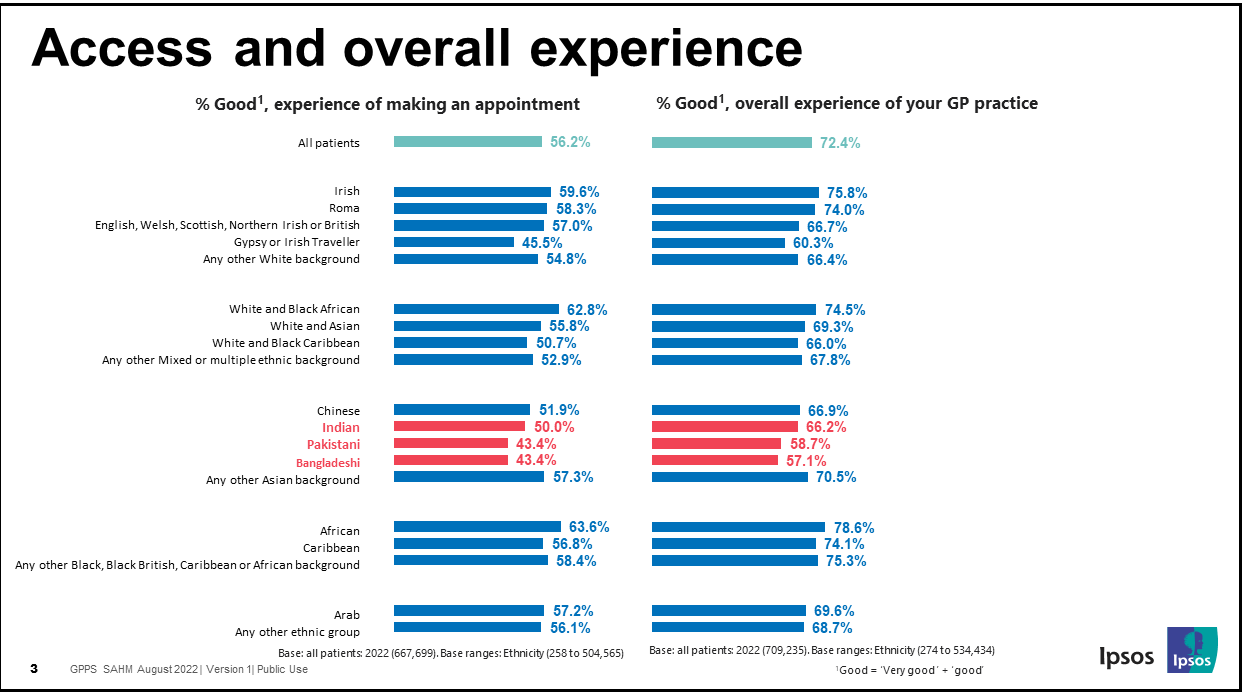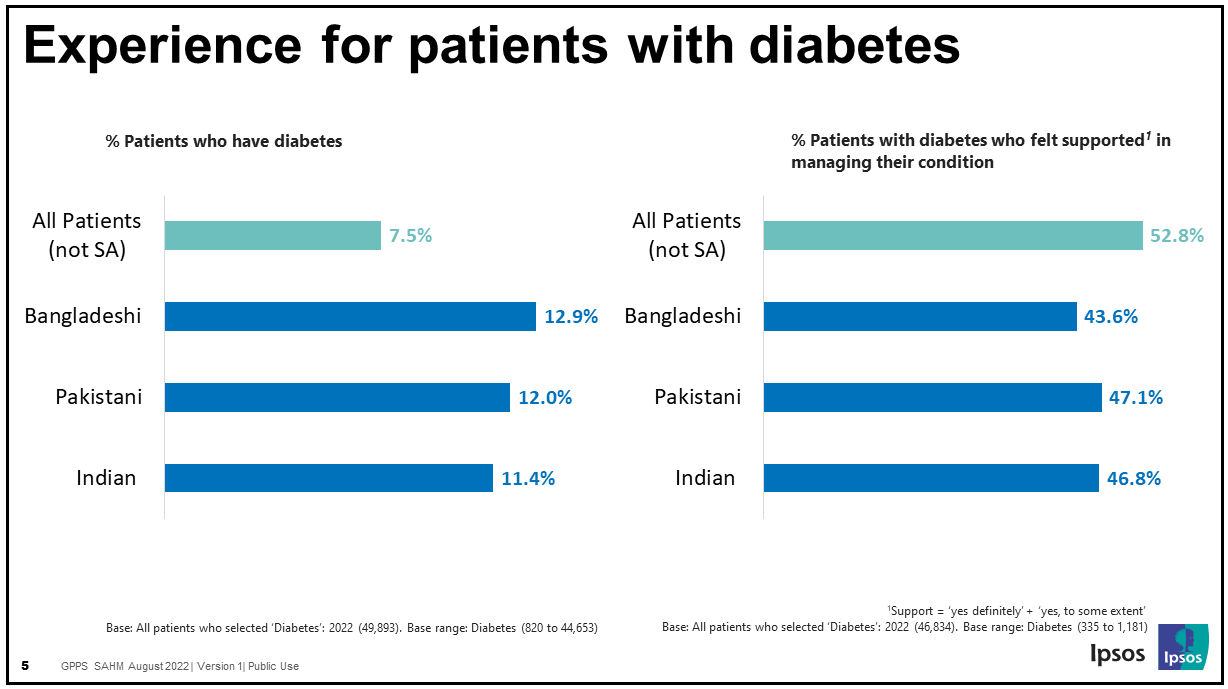Amun Rehsi gives an overview the data she presented as part of South Asian Heritage Month
As part of South Asian Heritage Month 2022, I participated in a panel called “Health Inequalities: It's Time to Act!” which highlighted different health inequalities experienced by South Asians. I used data from the 2022 GP Patient Survey (GPPS) to present key inequalities based on access and overall experience.
As GPPS is a large national survey with nearly 720,000 respondents, the data can be broken down by a number of different demographics, such as ethnicity, whilst still remaining robust. The ethnicity question used on the GP Patient Survey is based on the 2021 Census question and includes three South Asian groups; Indian, Pakistani and Bangladeshi.
Access and overall experience of GP services
GPPS data can be used to provide insights into patients’ access to and overall experience of GP services. The charts below demonstrate that patients’ access and overall experience of their GP practice varied by ethnicity.
When asked about their experience of making an appointment, the South Asian groups reported a less positive experience, compared with all other groups, as illustrated by the column on the left. Patients from Bangladeshi and Pakistani ethnic groups reported the least positive experience of making an appointment, with 43.4% saying their experience was ‘good’ compared with 56.2% of all patients.
Similarly, the column on the right shows that South Asian patients also reported a less positive overall experience of their GP practice than all other groups. Bangladeshi patients reported the least positive overall experience (57.1%), compared with all patients (72.4%).

Below I share two really interesting pieces of insight into the experience of South Asian patients with long-term conditions.
Experience of South Asian patients with diabetes
It has been well documented that South Asians are more likely to have diabetes than the general UK population. GPPS data corroborates this: the chart below shows the proportion of patients with diabetes is higher in Bangladeshi, Pakistani and Indian groups compared with all other patients. South Asian patients with diabetes are less likely to feel supported in managing their long-term conditions or disabilities. Diabetes services may therefore wish to reach out to their local communities to better understand and meet the needs of South Asian patients.

South Asian patients with mental health conditions
Mental health conditions also appear to impact South Asian patients differently. The chart below shows that Bangladeshi, Pakistani and Indian patients reported lower rates of mental health conditions compared with all patients. This is perhaps not surprising given the known barriers faced by some South Asians seeking mental health support, and highlights the need for further work to determine why this is the case.

Feedback
We are always looking for ways to improve the data we share, so if you have any feedback about these slide packs, please get in touch with the GP Patient Survey team at GPPatientSurvey@ipsos.com.
Technical information
The survey received 719,137 responses from patients aged 16 years or over who are registered with a GP practice in England. The survey has a national response rate of 29.1%.
Minor changes were made to the questionnaire in 2022 to ensure that it continued to reflect how primary care services are delivered and how patients experience them. This followed more substantial changes in 2021. Where questions have changed significantly in 2022 or 2021, comparisons have not been made to previous years. Further methodological information is available in the Technical Annex.
Please note that fieldwork for the survey (the period in which surveys are sent and returned) is undertaken from approximately January to March in each respective year. The 2022 survey was completed from 10 January through to 11 April 2022.
More information
For more information, please contact the GP Patient Survey team.
For more information about GPPS, visit the ‘About’ page on the survey website.



